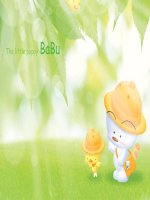ENGLISH 8- UNIT 13:- READING.(Thao Giảng)
Bạn đang xem bản rút gọn của tài liệu. Xem và tải ngay bản đầy đủ của tài liệu tại đây (1.8 MB, 25 trang )
07/20/14 Phan Ngọc Phương-THCS Đăk Rơ Ông.
Lim Festival
Buffalo- fighting festival
Boat- racing festival
Buffalo – killing festival
Cong chieng Festival
READ
1. This is the biggest festival in many countries.
2. People often decorate a tree and send the
best wishes by giving cards to each others.
4. It’s on December 25
th
.
3. They go to church and often spray together.
CHRISTMAS TREE
decorate (v)
spread (v)
I. VOCABULARY:
- Christmas Tree
- Christmas card
- Christmas carols = Christmas songs
- decorate (v)
- Santa Claus = Christmas Father
- spread (v)
Read the passages and
answer the questions
CHRISTMAS TREE
a. How long ago did the Christmas Tree
come to the USA?
The Christmas Tree came to The USA
in the 1800s.
Because he wanted to send
Christmas greetings to his friends.
b. Why did the Englishman have
someone design a card?
c. When were Christmas songs first performed?
About 800 years ago.
An American professor Clement Clarke Moore.
d. Who wrote the poem “A visit from Saint Nicholas”?
e. What is Santa Claus based on?
He is based on the description of Saint Nicholas
in the poem.
Christmas
Christmas Tree
Christmas card
Santa Claus
Christmas carols
Christmas
Special
Place of origin Date
Riga
Mid -19
th
century
Christmas
carols
USA
Christmas card
early 1500s
Santa Claus
England
1823
No information
Christmas Tree
800 years ago
* TRUE –FALSE SENTENCES:
1.People decorated a tree and put it in the
park.
2. An Englishman wanted to send Christmas
greeting to his friends.
3. The songs were stories put to music and
most people enjoyed them.
4. Santa Claus isn’t based on the description
of Saint Nicholas in the poem “A visit from
Saint Nicholas”.
T
F
T F
Now, look at the picture and describe
Christmas Father.
Homework
Read the paragraphs and
answer the questions again.
Rewrite some senten ces t o describe
Santa Claus.
1
2









